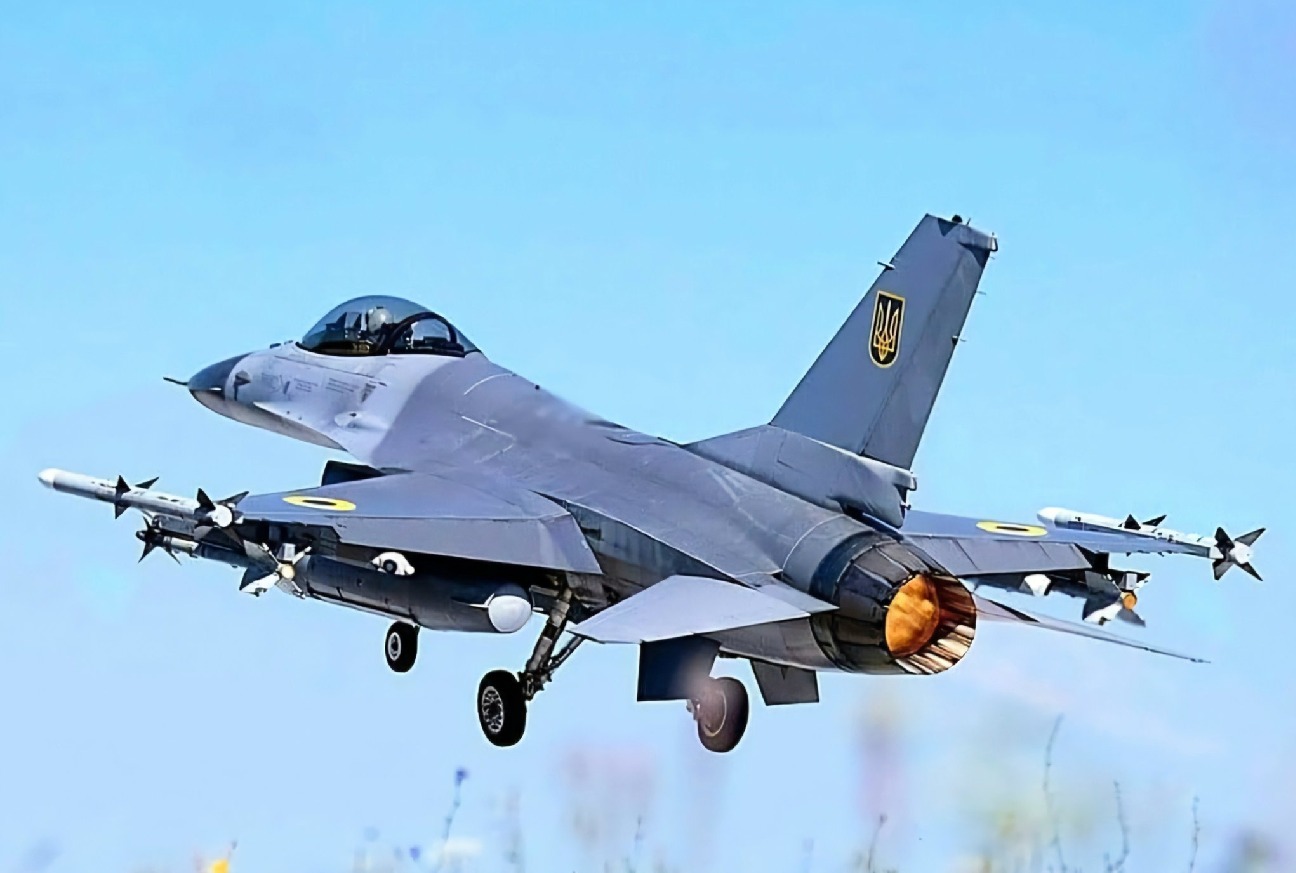In a significant achievement for Ukraine’s nascent fleet of F-16 multi-role fighter jets, the Ukrainian Air Force successfully shot down approximately ten Russian air targets on the morning of November 17.
This feat was accomplished during a massive combined attack launched by Russian forces, targeting Ukraine’s critical infrastructure across multiple regions.
President Volodymyr Zelensky shared the update: “Today, our F-16 pilots shot down about ten air targets. The aftermath of the combined attack on our infrastructure in the Rivne, Lviv, Dnipro, Volyn, and Odesa regions are being eliminated.”
The F-16s have proven to be a critical addition to Ukraine’s air defense capabilities. Since their initial deployment in August, these jets have effectively neutralized Russian cruise missiles and drones.
Experts quoted by EurAsian Times have consistently highlighted that Ukraine’s primary use of the F-16s would be in an air defense role, targeting such threats.
However, integrating these advanced fighter jets has not been without challenges. In August, an F-16 tragically crashed during a missile and drone attack, claiming the life of its pilot, Oleksiy Mes, known by his call sign “Moonfish.”
Following this incident, Ukraine’s Air Force commander was relieved of his duties, signaling an ongoing effort to optimize the jets’ deployment and training.
General James B. Hecker, head of the U.S. Air Forces in Europe and NATO Allied Air Command, previously noted the steep learning curve for Ukrainian pilots.
“They’re not going to put them in the riskiest missions,” he stated, highlighting the strategic deployment of the aircraft to maximize effectiveness while minimizing risks.
That being said, Russia’s assault on November 17 involved an array of sophisticated weaponry, including air, land, and sea-launched missiles alongside Shahed (Geran-2) attack drones.
Ukraine’s Air Force reported tracking 210 aerial targets, including 120 missiles and 90 drones. The breakdown included hypersonic Zircon missiles, aeroballistic Kinzhals, Kh-101 and Kalibr cruise missiles, and Shahed drones.
To execute this barrage, Russian forces deployed a mix of strategic and tactical platforms, such as seven Tu-160 and 16 Tu-95MS bombers, two Tu-22M3 bombers, and 10 MiG-31K fighters, supported by missile-carrying ships.
By noon, Ukrainian forces had intercepted 144 targets—102 missiles and 42 drones—while 41 additional drones were reported to have crashed or been lost.
Ukraine’s air defense systems operated in 19 regions, including Kyiv, Cherkasy, Odesa, Mykolaiv, Zaporizhzhia, and Lviv. The coordinated effort underscores the scale and intensity of Russia’s assault and Ukraine’s determination to defend its skies and critical infrastructure.

Ukraine’s F-16 Fighter Jet
The Ukrainian Air Force’s recent success in intercepting ten Russian air targets during a massive missile and drone barrage on November 17 highlights the combat effectiveness of its F-16 multi-role fighter jets.
The F-16s in Ukraine’s arsenal are equipped with an array of weaponry, enabling them to counter both long-range and close-range threats.
The most commonly employed systems are the AIM-9 short-range and AIM-120 medium-range missiles, which provide a powerful combination for intercepting enemy targets at different distances.
The AIM-9X variant, particularly suited for intercepting cruise missiles and drones, offers enhanced range and speed. Its updated MK-139 engine extends its range to 30 kilometers.
For close combat scenarios, the F-16s are armed with the M61 Vulcan cannon, a 20-mm six-barrel weapon capable of firing 512 rounds, ensuring lethality in dogfight situations.
The F-16s also have advanced avionics, including the Link-16 information exchange system. This allows pilots to launch missiles using external targeting data, ensuring greater flexibility and precision during engagements.
The integration of these systems represents a crucial leap in operational capability, which allows Ukraine’s Air Force to counter Russian air threats more effectively.
A crucial enhancement to the Ukrainian F-16s lies in their electronic warfare (EW) systems. The US Air Force (USAF) has reprogrammed these systems to protect the aircraft from evolving Russian threats.
Air Marshal Anil Chopra (Retd.), an Indian Air Force veteran, previously emphasized the importance of this adaptation, stating, “The reprogramming of the F-16 by the USAF is in favor of the United States and Ukraine. They need to safeguard their frequencies from Russia, which also makes use of advanced Electronic Intelligence tools. These tools record everything. The US has reprogrammed the F-16s EW system, so too much information does not fall into Russian hands.”
The updated EW systems feature a threat library containing the latest intelligence on Russian military assets within a 300-kilometer range of the frontlines. These libraries, driven by software rather than outdated hardware, are continuously updated to reflect battlefield realities.
The partnership between Ukraine and the United States likely extends beyond battlefield operations. Ukrainian forces may provide valuable data from their encounters with Russian systems, enabling both nations to refine and expand their EW capabilities.
- Contact the author at ashishmichel(at)gmail.com
- Follow EurAsian Times on Google News




